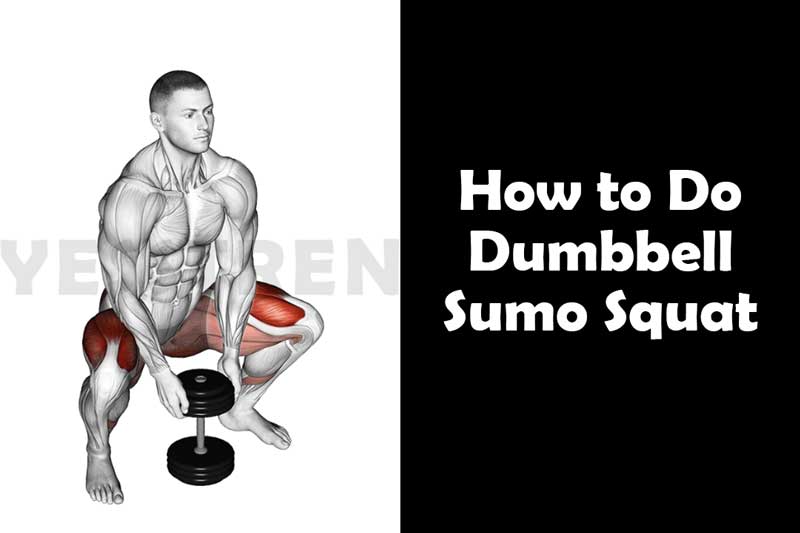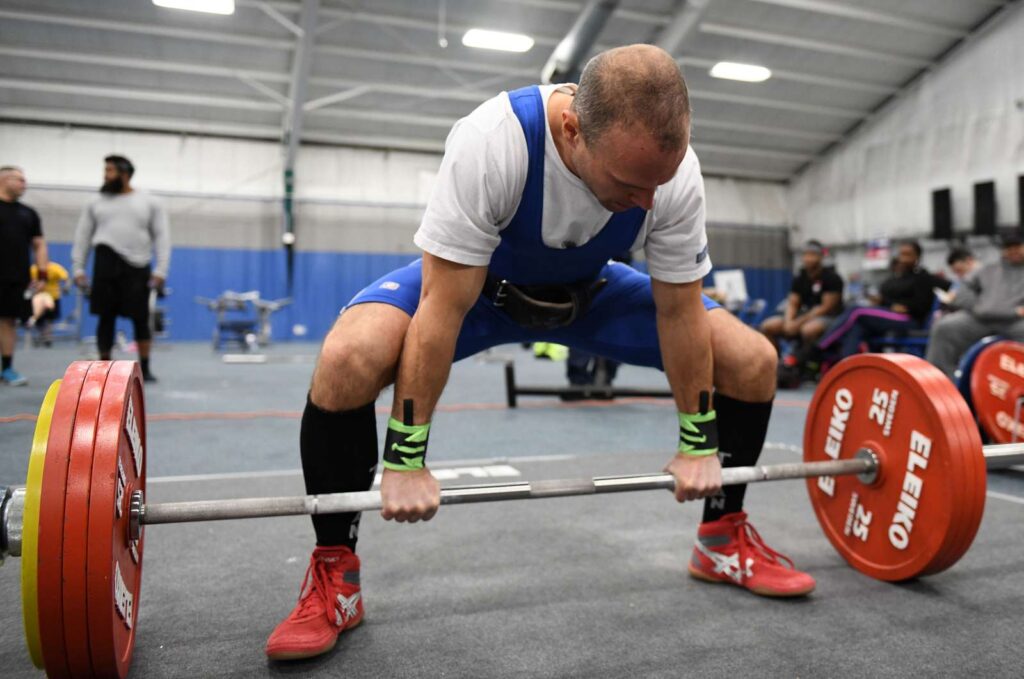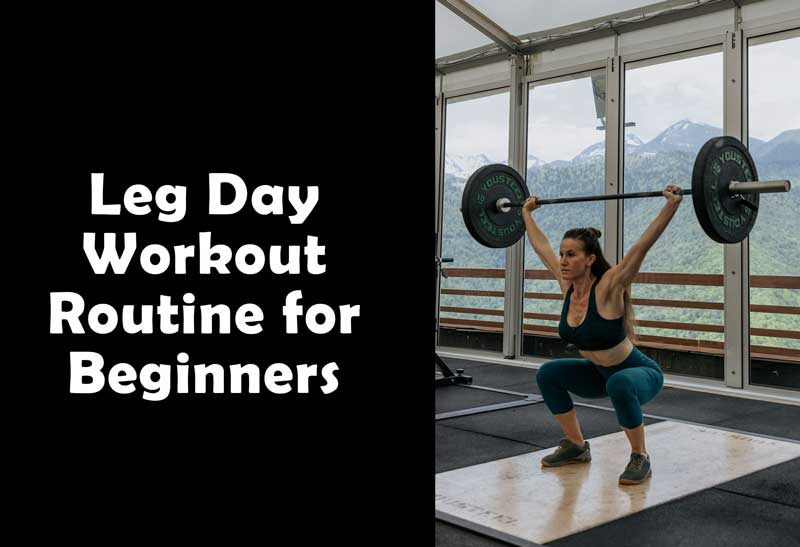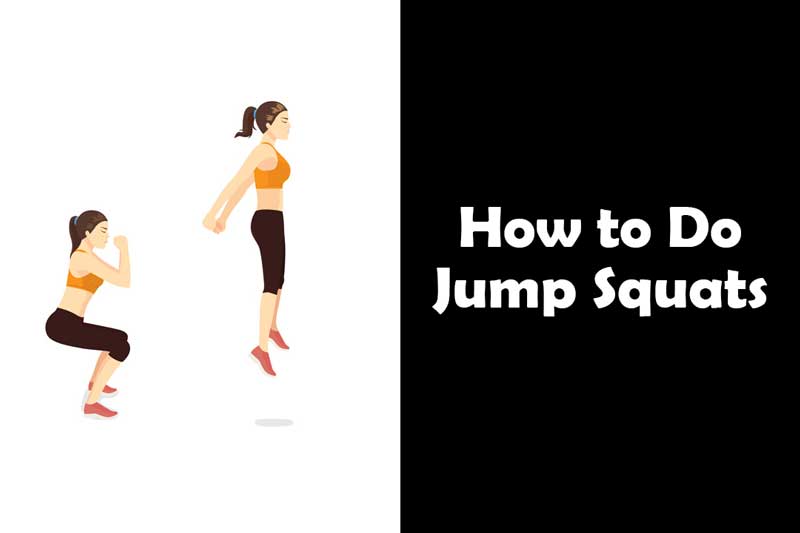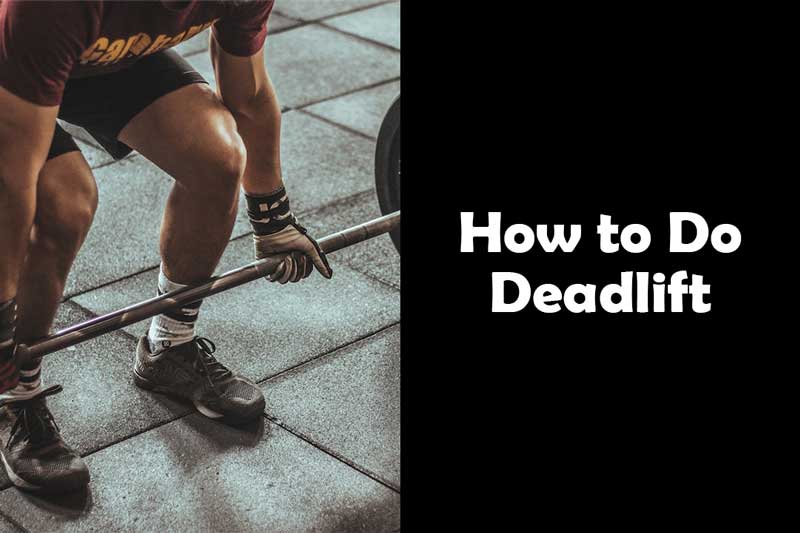We all already know about the amazing exercise, that is squats. But have you heard about sumo squat and its advanced version ‘Dumbbell Sumo Squat’? Just like a deadlift has a Sumo deadlift version, squat has a sumo squat version.
The dumbbell sumo squat is a fantastic exercise that targets your lower body muscles while providing a unique twist to your routine.
In this article, we will guide you through the proper form and technique of performing the dumbbell sumo squat. Get ready to elevate your leg training and achieve impressive results!
What Is Dumbbell Sumo Squat?
Dumbbell Sumo Squats are a variation of squats that adds a challenge and changes to the regular squat.
Dumbbell sumo squats are an excellent exercise that primarily targets your quadriceps, hamstrings, glutes, and inner thighs.
This compound movement engages multiple muscle groups simultaneously, making it an efficient and effective exercise for building strength and enhancing overall lower body development.
Benefits of Dumbbell Sumo Squat
Performing dumbbell sumo squats offers several benefits that can take your leg workouts to the next level. Some of the advantages include:
- Increased Lower Body Strength: Dumbbell sumo squats engage large muscle groups, promoting strength and muscle development in your quadriceps, hamstrings, and glutes.
- Improved Functional Movement: This exercise mimics the motion used in various daily activities, enhancing your overall functional strength and stability.
- Enhanced Core Engagement: Maintaining an upright posture during the dumbbell sumo squat requires core stabilization, leading to improved core strength.
- Boosted Calorie Burn: As a compound exercise, dumbbell sumo squats can help you burn more calories due to the high demand placed on multiple muscle groups.
- Leg and Hip Mobility: By performing sumo squats, you can enhance the flexibility and range of motion in your hips, leading to improved athletic performance.
Muscles Worked in Dumbbell Sumo Squats
Dumbbell sumo squats are a compound exercise that engages multiple muscles in your lower body.
By performing this exercise with proper form and technique, you can target and strengthen the following muscles:
1) Quadriceps
The quadriceps muscles, located in the front of your thighs, are the primary movers during dumbbell sumo squats. They help in extending your knees and driving your body upward from the squatting position.
Hamstrings
Situated at the back of your thighs, the hamstrings act as synergists in the dumbbell sumo squat. They assist the quadriceps in knee extension and contribute to stabilizing the movement.
2) Glutes
The gluteal muscles, including the gluteus maximus, medius, and minimus, play a significant role in the dumbbell sumo squat. These muscles are responsible for hip extension, which is crucial during the upward phase of the exercise.
3) Adductors
The adductor muscles, found on the inside of your thighs, are highly engaged in the sumo squat stance. They assist in stabilizing the legs and controlling the outward rotation of the hips.
4) Calves
Although not the primary focus, the calf muscles, including the gastrocnemius and soleus, provide stability and help with maintaining balance throughout the dumbbell sumo squat movement.
5) Core Muscles
While the primary emphasis of the dumbbell sumo squat is on the lower body, the core muscles, including the abdominals and obliques, also play a role in maintaining stability and proper posture during the exercise.
Preparing for the Exercise
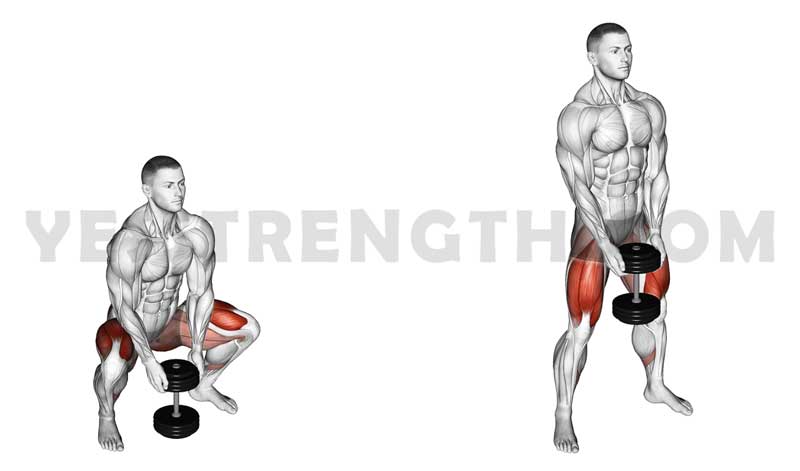
Before you dive into the dumbbell sumo squat, it’s crucial to prepare yourself properly. Here’s what you need to do:
1) Equipment:
- Dumbbells: Choose a pair of dumbbells that allow you to perform the exercise with proper form while providing a challenging resistance.
2) Setup:
- Stand with your feet shoulder-width apart, toes pointed slightly outward.
- Hold a dumbbell with both hands, allowing it to hang in front of you at waist level.
Proper Form and Technique
To get the most out of your dumbbell sumo squat, it’s essential to execute the exercise with proper form and technique. Follow these steps:
- Stand with your feet wider than shoulder-width apart and your toes pointing outward.
- Hold the dumbbell in front of you, keep your arms straight while holding the dumbbell.
- Lower your body by bending your knees and hips, keeping your back straight and chest up.
- Continue descending until your thighs are parallel to the ground or slightly lower.
- Push through your heels and extend your knees and hips to return to the starting position.
- Repeat for the desired number of repetitions.
Variations of Dumbbell Sumo Squat
To add variety and challenge to your leg workouts, you can incorporate different variations of the dumbbell sumo squat. Here are a few options to consider:
- Goblet Dumbbell Sumo Squat: Instead of holding the dumbbell and letting it hang in front of your waist, hold a single dumbbell vertically in front of your chest, close to your body.
- Sumo Squat with Pulse: Perform a regular dumbbell sumo squat but add a small pulse at the bottom of the movement before returning to the starting position.
- Sumo Squat Jump: Once you reach the bottom of the squat, explode upward and jump off the ground, landing softly back into the squat position.
Feel free to experiment with these variations to keep your workouts exciting and challenging.
Incorporating Dumbbell Sumo Squats into Your Workout Routine
To incorporate dumbbell sumo squats effectively into your leg workout routine, consider the following guidelines:
- Perform 3-4 sets of 8-12 repetitions.
- Rest for 60-90 seconds between sets as a beginner.
- Combine dumbbell sumo squats with other compound leg exercises, such as lunges, deadlifts, or leg presses, for a comprehensive lower body workout.
- Aim to work your legs 1-2 times per week, allowing sufficient time for recovery between sessions.
Common Mistakes to Avoid
When performing dumbbell sumo squats, it’s crucial to maintain proper form to prevent injuries and maximize results. Here are some common mistakes to avoid:
- Allowing your knees to collapse inward: Keep your knees aligned with your toes throughout the movement to avoid unnecessary stress on the joints.
- Rounding your back: Maintain a straight and neutral spine throughout the exercise to prevent strain on your lower back.
- Lifting your heels off the ground: Keep your feet flat on the floor throughout the squat to ensure stability and engage the correct muscles.
Tips for Maximizing Results
To make the most out of your dumbbell sumo squat workouts, consider the following tips:
- Gradually increase the weight: As you become comfortable with the exercise, progressively increase the weight of the dumbbell to challenge your muscles further.
- Focus on the mind-muscle connection: Concentrate on engaging the target muscles during each repetition to enhance muscle activation and stimulate growth.
- Incorporate supersets or circuits: Combine dumbbell sumo squats with other leg exercises to create supersets or circuits, increasing the intensity and variety of your workouts.
- Maintain consistency: Consistent training is key to achieving results. Aim to incorporate dumbbell sumo squats into your leg routine at least twice a week.
Safety Precautions
While dumbbell sumo squats are generally safe for most individuals, it’s essential to prioritize safety during your workouts. Here are some precautions to consider:
- Start with lighter weights: If you’re new to the exercise, begin with lighter dumbbells to allow your muscles and joints to adapt gradually.
- Warm up properly: Prioritize a dynamic warm-up routine that includes mobility exercises for your hips, knees, and ankles to prepare your body for the exercise.
- Listen to your body: If you experience pain or discomfort during the exercise, stop immediately and consult a fitness professional or healthcare provider.
Conclusion
Incorporating dumbbell sumo squats into your leg workout routine can bring excitement and effectiveness to your fitness journey.
This compound exercise targets various lower body muscles, enhances strength, and improves functional movement.
By following proper form, avoiding common mistakes, and implementing variations, you can optimize the benefits of dumbbell sumo squats and achieve your fitness goals.
Frequently Asked Questions (FAQs)
1) Can I do dumbbell sumo squats without weights?
Yes, you can perform dumbbell sumo squats without weights by using your body weight as resistance. However, adding weights can increase the intensity and challenge your muscles further.
2) Are dumbbell sumo squats suitable for beginners?
Yes, dumbbell sumo squats can be modified to suit different fitness levels. Beginners can start with lighter weights or no weights at all and focus on mastering the proper form and technique before gradually increasing the resistance.
3) Can dumbbell sumo squats help in toning the inner thighs?
Yes, dumbbell sumo squats target the inner thighs along with other lower body muscles. Consistent and proper execution of this exercise can contribute to toning and strengthening the inner thigh muscles.
4) How often should I incorporate dumbbell sumo squats into my workout routine?
It is recommended to incorporate dumbbell sumo squats into your leg workout routine 2-3 times per week. This frequency allows for adequate muscle recovery and growth.
5) Can dumbbell sumo squats help in burning calories?
Yes, dumbbell sumo squats are a compound exercise that engages multiple muscle groups simultaneously. This increased muscle activation leads to a higher calorie burn during and after the workout.
And as always Say Yes to Strength

